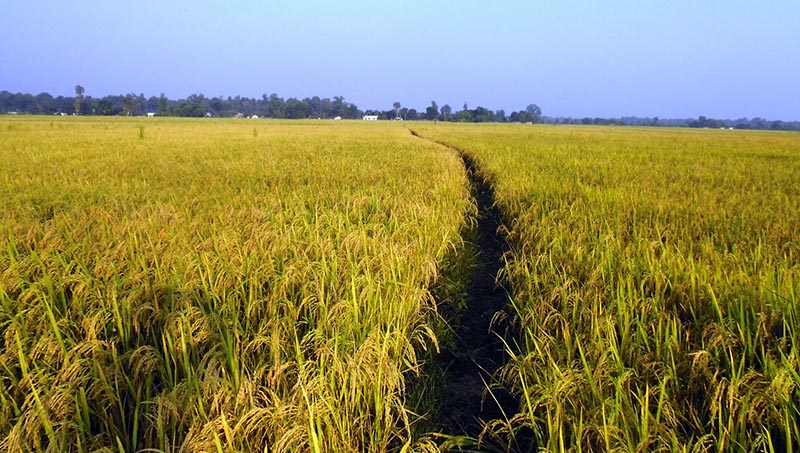Govt claims it can achieve targeted growth rate of 7.2pc
- Record high paddy production and Rs 30bn election expenses seen as major stimulants
Kathmandu, October 10
At a time when multilateral development partners — World Bank and Asian Development Bank — have made forecasts that the growth rate will decline moderately from around 4.5 per cent to 4.7 per cent, compared to 6.9 per cent in the previous fiscal, the government has said the high growth rate of last fiscal can be achieved this fiscal too.
According to the Ministry of Finance, the country will achieve the targeted growth rate of 7.2 per cent this fiscal as paddy production will break last year’s record of 5.23 million tonnes. Paddy production is expected to hover at around 5.3 million metric tonnes this fiscal.
While making the growth forecast, development partners assumed that losses borne by the agriculture and livestock sectors due to recent floods would bring down the growth rate by around one percentage point.
However, a recent survey carried out by the Ministry of Agricultural Development has projected paddy production to increase in comparison to the last fiscal. “Based on our best judgement survey by mobilising district agriculture officers, we have projected paddy production to hover around 5.3 million tonnes,” said Yogendra Kumar Karki, spokesperson for MoAD.
“Productivity is expected to rise to 3.46 tonnes per hectare this fiscal compared to 3.36 tonnes per hectare in the last
fiscal.”
According to Karki, the MoAD had set paddy production target of 5.4 million tonnes for this fiscal, which could come down slightly to 5.3 million tonnes as floods inundated paddy fields in the Tarai.
Following the MoAD’s estimation of record-high paddy production, the MoF claimed that the growth rate would not decline as projected by the World Bank and Asian Development Bank.
Paddy production has a direct impact on economic growth as paddy accounts for one-fifth of total agricultural gross domestic product of the country and the agriculture sector contributes 28 per cent to the GDP.
Though development expenditure is still slow, improved agricultural production, post-earthquake reconstruction activities, increase in wholesale and retail trade, fiscal transfer to the local levels and expenses for elections will stimulate economic growth, according to Finance Secretary Shanta Raj Subedi.
“The government is spending Rs 30 billion for the two-tier polls — provincial and parliamentary — that will be held in the near future, which is expected to boost economic activities in the country and support economic expansion,” added Subedi.
Finance Secretary Subedi, however, said that it will be challenging for the country to sustain the high economic growth in the coming fiscal years without attracting massive domestic and foreign investments in infrastructure and production sectors to transform the country from an import-based economy to production-led economy.
The country needs to achieve 7.5 per cent growth for the next 10 years to be able to fulfil its aspiration of becoming a middle-income country by 2030.
READ ALSO:
- Paddy plantation update
- ‘Paddy seed sowing’ campaign aimed at flood-affected districts in the offing
- Weak monsoon affects paddy plantation






